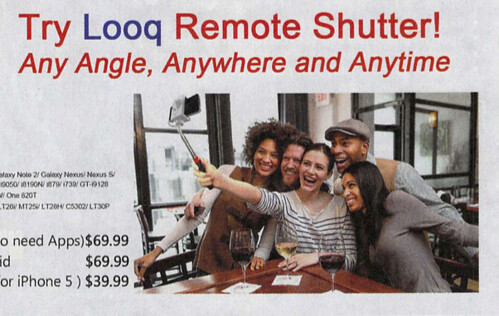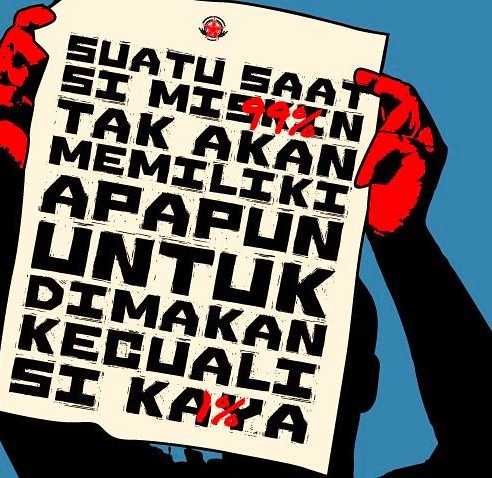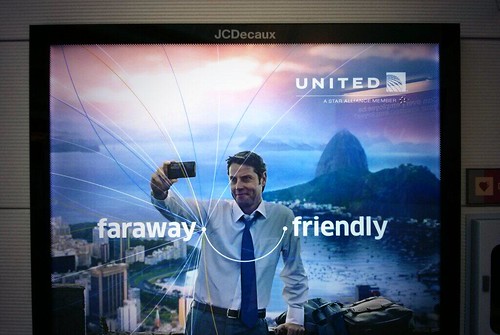At the American Anthropological Association (AAA) meeting in Chicago, I presented a paper in the panel “Bridging Digital and Physical Publics: Digital Anthropologist’s current engagements with 21st Century Publics.”
I spoke about my fieldwork with the online Occupy movement in Indonesia – and about how, as anthropologists working online, we are especially well positioned to approach online research using participant observation. One of my findings in this research was the emergence of actions suggesting qualities of physicality, embodiment, and worldness in Facebook, an online place that hasn’t traditionally been considered a virtual world. I noted that:
My work with online activists challenges popular discourses around “clicktivism” a term originally coined to distinguish between online activists who adopt the “logic of the marketplace” and those who reject it. In light of the complex biographies, histories, and practices of the activists I worked with, I’m surprised how often anthropologists question the legitimacy of using social movement’s online actions as meaningful data.
In part, they do so because this simplified “clicktivism” discourse often does exactly what the term was meant to work against: replaces complex online lives with user-interface data acts such as “clicks.” Instead, when researching social movements online, we can to turn our ethnographic focus toward the cultural activity those data acts constitute when they’re seen as part of an emergent, socially and historically situated, engagement in cyberspace.
From a methods perspective – reducing online activity to clicks and bytes for analysis also runs the risk of masking the unexpected and the irregular in the textured terrains of activism and social life online. Online activism doesn’t have to be homogenized into either: a new utopian era of democratized information on the one hand (as some accounts of Occupy do)…or the pejorative clicktivism with its connotations of political impotence, laziness, and capitulation to a globalizing capitalism on the other.
Instead, in studying social movements online, we can use the same techniques we use to analyze physical world practices – and their systems of meaning, what Geertz called “imaginative universes.” Whether I’m looking at Shadow Puppet Theater in East Java, an Occupy Library meeting on Skype, or images posted in an Occupy Facebook group – I find place specific emergent cultural properties that can be understood as more than the sum of individual data acts.
This profile picture from an Indonesian Occupy Facebook group says “At one point the poor will have nothing to eat but the rich.” Poor has been overwritten with “99%” and rich with “1%” so that it says: “At one point the 99% will have nothing to eat but the 1%.” Soon after I saw this, a photograph was posted to the same group of a young man holding a printed version of this image.
I first read this post as a broadcast from the group referring back to a protest in the physical world. And I often hear this interpretation – that Occupy activity online is a reference back to physical world action. But unlike other images of protest events – this post didn’t include a description of where it was taken. This self-reflexive embedding of images and meanings – shows an activist holding a sign, which is itself an image of an activist holding a sign, which in turn was also the Facebook group’s profile image.
In my fieldwork I noticed that unlike U.S. occupiers, Indonesian activists were not modifying their profiles to become occupiers, but were instead going into groups and pages to enact Occupy in those places. As I considered how users were distinguishing their profiles from their actions in groups – I realized this image was not posted to reflect or mark a moment in physical space but to produce one in cyberspace. This reversal of assumptions about what cyberactivist’s activity entails led me to see these Facebook groups more as their user’s were seeing them, as occupations in themselves.
When I noticed this use by online activists back in 2011, I started thinking about everyday examples of offline actions which are about and for the online. One that came to mind was taking selfies or really any photos for Facebook. I thought about how normalized it has become to set a scene and photograph it in a particular way in order to produce a moment in cyberspace. We pose in certain ways, arrange ourselves and the technology in particular ways, and post it to Facebook, share it on Twitter, or in other online spaces.
Earlier in the week I came across the tweets announcing that the Oxford word of the year was “selfie.” I wrote about it online posting: “An ‘offline’ action for online places!”
And the day after that, while walking through Newark Airport toward my flight to Chicago, I came across this billboard:
Here, I saw the selfie move into an advertising space where it was depicted as a normative activity for this ‘business man.” In the image he is capturing his visit to an exoticized place for the online, in order to spread it through the networks of the web and travel represented by the lines/flights emanating from the “faraway.”
I propose thinking about these acts – such as the selfie, the posted image by the Indonesian occupiers, and other physical-world-based online-directed acts – borrowing from Mauss, as online ”techniques of the body” or cyber-techniques of the body.
The selfie offers a useful framework through which to explore these online techniques of the body because it is becoming as familiar and everyday as the examples Mauss used – like swimming, walking and such. And, like other techniques, additional technologies are emerging to enhance the performance of selfies. On the flight home from Chicago I found the following tool advertised in a magazine, brought home the ad and scanned it:
Like swimming flippers, tennis shoes, and other technologies, this extension of the human body is cyborg technology meant to extend the ability of the physical and thereby also elaborate the selfie.
The selfie is, by definition, recognizable because of its limitations. A selfie is a photo which can only be produced when taken from a space limited by the distance the human arm can reach, or by the extent of a mirror. A photo taken from further away, or from outside that range doesn’t have the characteristics of a selfie. But the “Looq” extends that reach, allowing selfies of groups, selfie sociality, selfie’s with wider views, more people, more background or context visible, and avoiding the “embarrassment” of “asking stranger[s] to take pictures.” This final point brings the question to mind, which is more embarrassing: asking someone to take your group selfie for you? or inadequately performing the group selfie because your arm doesn’t reach far enough?
The characteristics of the selfie – its limits, was originally seen by some as a ‘poor performance’ of photography taken in a mirror or at arms reach in usually ‘inadequate’ lighting, but this tool allows the performance of the selfie without those limits. The Looq bypasses the necessity to ask others in physical space for assistance, while enabling an expansion of social contact online for the group. This cyborg tech built for cyber-techniques of the body thereby also amplifies the ability to produce for the online engagement.
The Looq, seen as an artifact of physical material culture is also a tool of the online/virtual social world. As I continue looking at cyber-techniques of the body, the emergence of material culture like this tool provides interesting openings to explore the mutually shaping relationships between physical and virtual socialities and their relations to action in the physical world.
Share this:











